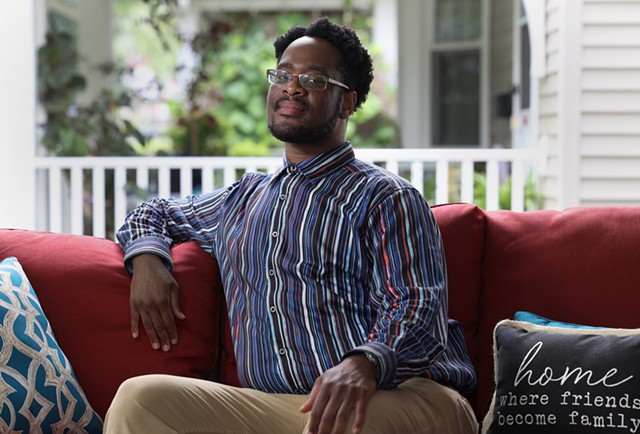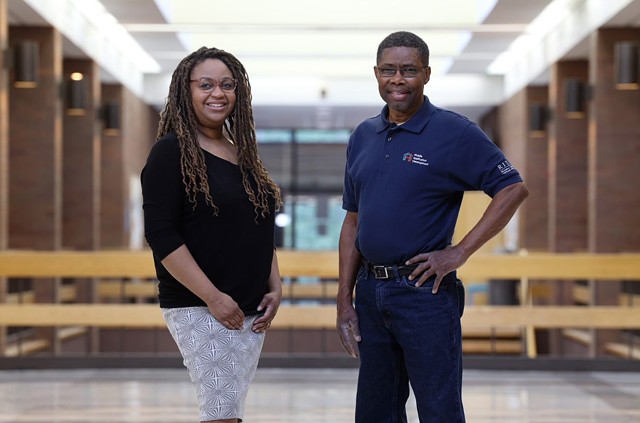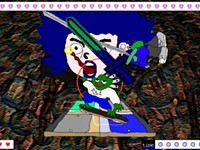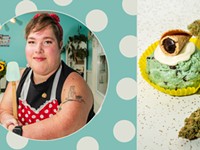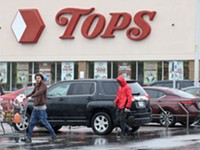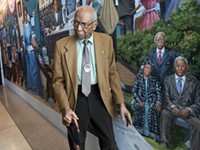[
{
"name": "500x250 Ad",
"insertPoint": "5",
"component": "15667920",
"parentWrapperClass": "",
"requiredCountToDisplay": "1"
}
]
LeeAnne Valentine, a deaf Black woman who communicates using American Sign Language, walked into a doctor’s office last year with chronic pain in her gallbladder.
A white woman who acted as the office’s interpreter attempted to help her relay her symptoms to a physician.
“Give me an MRI or whatever you need to do,” Valentine recalled saying. “But I absolutely can't sleep, I can't eat, I'm really in pain here.”
The interpretation fell short, Valentine recalled. Something — an almost intangible quality — was lost in the translation.
“Her tone of voice was not very inflected,” Valentine said, who described the interpreter’s signing as “very neutral” and “monotone.”
It is a little-known fact to most people in the hearing world that American Sign Language has evolved into different dialects and that many Black deaf people use a variation of their own.
Black ASL, as it is known, has a structure and grammar distinctive of ASL that researchers say reflects the historic isolation of the Black deaf community and the ongoing influence of spoken Black English, and evokes in its users a sense of solidarity.
The signs for some words and phrases are often more emotive and involve two hands that gesture closer to the forehead than the chin. Some words are represented by completely different signs.
The pandemic has shed light on disparities between communities of people of color and white society. This is especially true for Black deaf people, who are a minority in an already marginalized group.
In addition to systemic racism and lack of access to health information and care faced by most Black people, those who are deaf face another obstacle in the form of communication. That obstacle can amplify the mistrust many Black people have for the medical profession.
A Black interpreter can make all the difference in a health care setting, as Valentine learned.
After days of going back and forth to see her doctor without satisfaction, Valentine was assigned a Black interpreter. Only then was she able to convince her doctor to order the MRI she had been requesting. The result of the test revealed she needed emergency gallbladder surgery, she said.
“She actually interpreted what I said, with the intent and the tone, plus my emotions,” Valentine said. “And she conveyed that to the doctor and the doctor’s like, ‘Oh, okay, okay, fine.’ And he finally took some action.”
It is a common misconception that signing is a universal language. In fact, there are as many sign languages as there are deaf communities, according to the definitive study of Black ASL, “The Hidden Treasure of Black ASL,” published in 2011 by Gallaudet University, the private university in Washington, D.C., for the deaf and hard of hearing.
Black ASL, its researchers say, is a rich linguistic system rooted in the history of segregation. Just as Americans and British share a language, there are differences in vernacular and variations in individual usage. It is hardly surprising, then, researchers say, that different signing systems evolved out of America’s segregated past.
Still, not all deaf Black people use Black ASL, although some researchers have estimated that about half of all deaf Black people do.
Joseph Hill, an associate professor in the Department of American Sign Language and Interpreting Education at the National Technical Institute for the Deaf at Rochester Institute of Technology, recalled being exposed to a blend of ASL and Black ASL in his youth.
“That standard mode of white ASL is what I saw most often growing up,” said Hill, who is Black. “But I also saw Black deaf children, my peers, who were signing differently. So I grew up with really quite a mix.
“I didn’t notice the difference between cultures, communities of practice,” he went on. “I just thought, you know, everyone signs differently.”
The first school for the deaf in the United States opened in Hartford, Connecticut, in 1817. The school, which became known as the American School for the Deaf, enrolled its first Black student eight years later.
But after the Civil War, schools geared toward Black deaf students began to emerge, according to “The Hidden Treasure of Black ASL.” That separation led to differences in the way students were taught. White schools emphasized an oral method of learning, while Black schools focused on signing.
Nationwide efforts to desegregate students, both deaf and hearing, nearly a century later led to a predominantly white influence over formal education. In schools for the deaf and programs for the deaf in mainstream schools, that translated to an emphasis on ASL and lip-reading.
“I use the same mode of communication as my white teachers,” Hill said. “Back then it was so rare for most deaf people to have Black interpreters. And it’s still rare to find Black interpreters.”
Black people are underrepresented among sign language interpreters.
About 11 million Americans are deaf or hard of hearing, according to the U.S. Census Bureau, and Black people make up about 8 percent of that population.
Yet just 4 percent of the roughly 10,300 certified sign language interpreters in the United States are Black, according to a recent annual report from the Registry of Interpreters for the Deaf. The profession as a whole is largely homogeneous, with 87 percent of interpreters identifying as white women.
ASL interpreter Kristi Love is trying to change that as the coordinator and one of the founders of RIT’s Randleman Program, which trains and mentors interpreters of color.
Love said many young Black people are unaware of ASL interpreting as a career, and that the few who enter interpreting programs often drop out due to feeling isolated.
“At times that’s important to be able to relate to somebody culturally,” Love said.
When it comes to health care settings, she said, it is the responsibility of medical professionals to be informed on the needs of deaf patients.
Patients visiting their doctors’ offices may not have the same level of access to interpreters or special ASL video discharge instructions that are provided by large institutions, like Strong Memorial Hospital.
Strong emergency room physician Dr. Jason Rotoli teaches doctors ways to better connect with deaf patients as the director of the Deaf Health Pathways course at the University of Rochester Medical Center.
He said accessibility and representation are keys to serving deaf communities. Even with an adequate interpreter, he said, hearing physicians should consider that a lack of access to health literacy can also affect the way important information is shared.
“The deaf person oftentimes may feel a little bit fearful of providing all the information that’s necessary, or maybe they don't even know which information is necessary,” Rotoli said.
Another widely held but erroneous belief is that sign languages are visual translations of spoken languages. They are not, and a challenge of interpreting in a medical setting is that there are not always signs to translate medical information, such as a diagnosis.
Valentine pointed to terms like “heartburn” and “stroke,” which she said are foreign to some deaf people because they aren’t often used in conversation.
“All these medical conditions, you know, that people don't understand they don't have access to. So it's hard for them to explain what's going on,” Valentine said.
These barriers tend to be especially pronounced in the Black deaf community, and have been underscored by the pandemic.
A National Institute of the Deaf study in 2020 found a need for improved guidance on managing COVID-19 and navigating health care for deaf communities. The study showed that deaf people who exhibited signs of the virus frequented emergency rooms for treatment, despite guidelines for people to stay home and call their doctor.
Another NTID study found that 78 percent of deaf students of color felt that their health literacy skills were lacking.
JT Reid, who is Black and deaf and a board member of the nonprofit Partners in Deaf Health, said he didn't see a large turnout of Black deaf people at vaccine clinics.
“I honestly maybe seen two or three Black deaf people there,” Reid said. “So, I'm like, where are the rest of my community? It seems like they just did not get the information, and that's very unfortunate.”
Reid said he believes lack of access to health care information contributes to health disparities in the Black deaf community.
Many doctors speculate that Black deaf people experience greater health disparities. Because the general deaf population is often excluded from medical research, however, to what extent disparities exist are often unknown.
Valentine said outreach in the Black deaf community will take extra effort, in part because years of discrimination have fomented fear and mistrust of the health care system. She said Rochester’s Black deaf community is small, but accessible, and she encouraged hearing people inside and outside of the medical profession to spend some time with them.
“Just because we're Black and deaf, please don't ignore us,” she said. “You know, we want to thrive. We want to stand on our own.”
April Franklin is a reporter for WXXI Public Media, a media partner of CITY.

